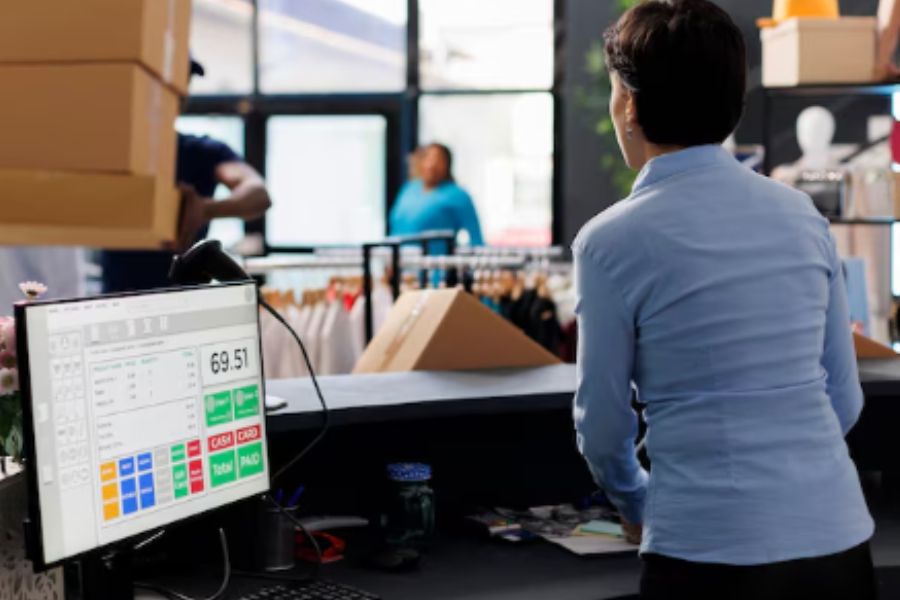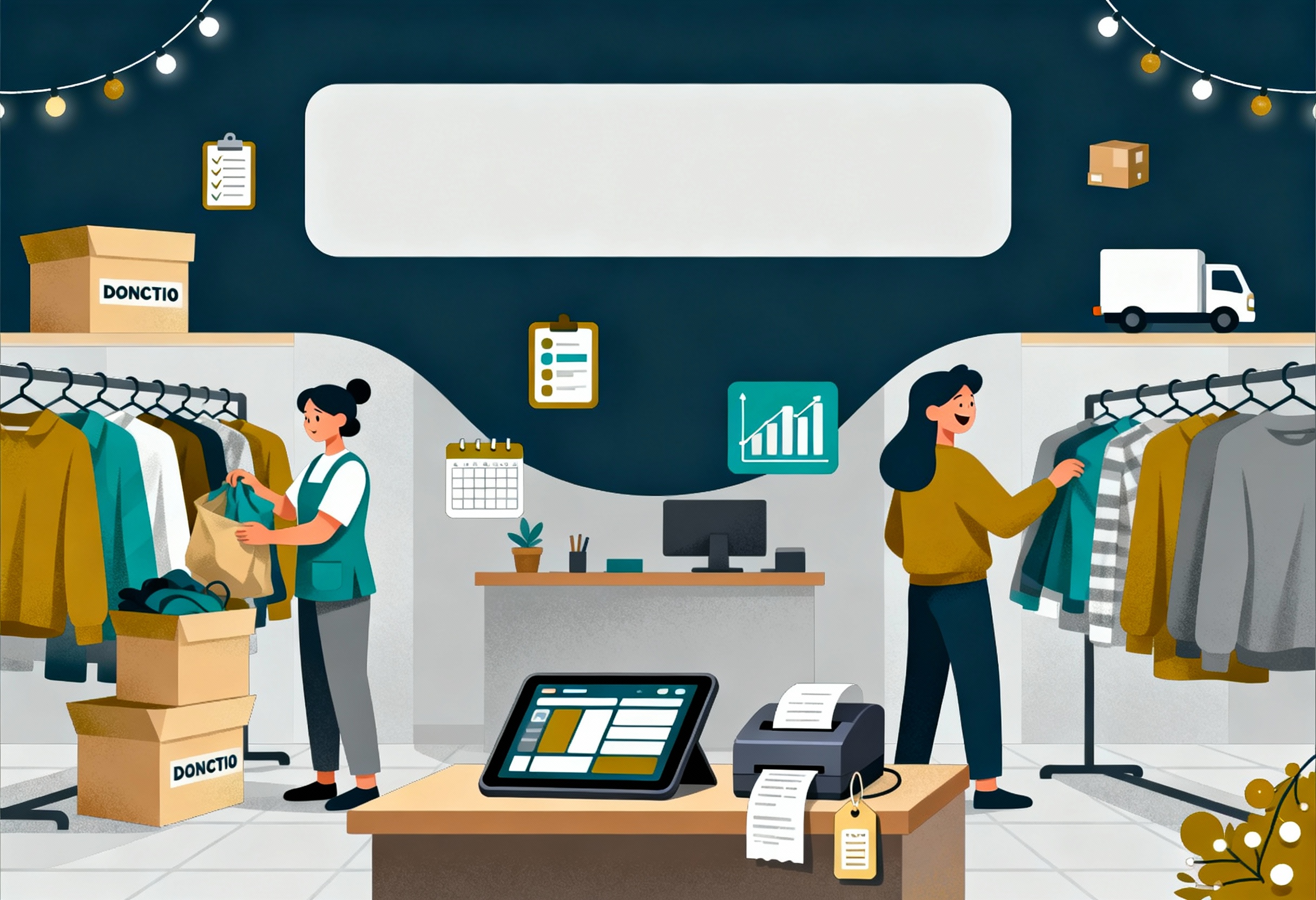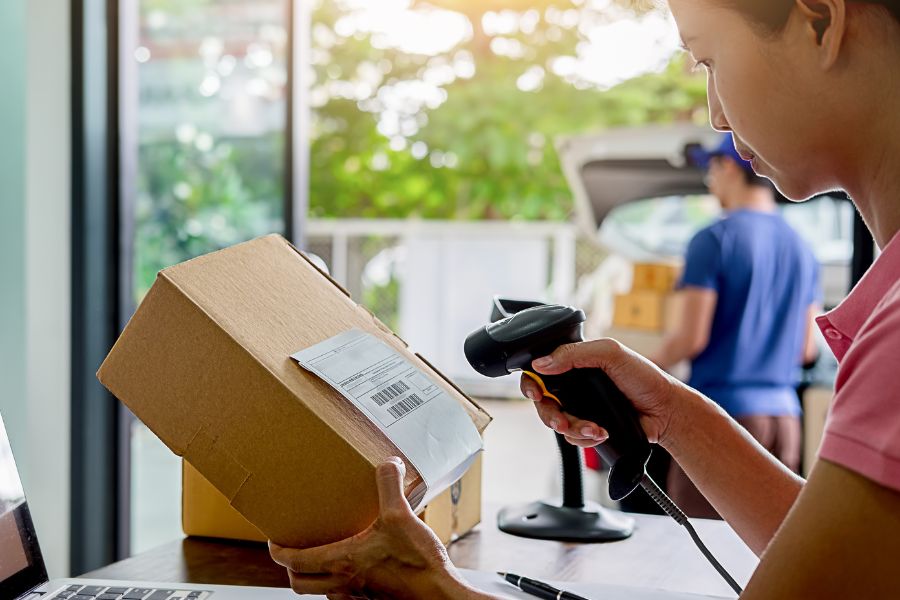Speed-hungry shoppers now jump between online stores and physical shops without blinking. In this O2O world, real-time stock updates are a must. Miss a beat, and you miss a sale. Global retailers bled over $1 trillion in lost revenue to stockouts in 2024 alone, and 58 % of brands still operate with sub-80% inventory accuracy. In this guide, we’ll break down why it matters and spotlight the best inventory management software for 2025.
Highlights:
- Effective inventory management is the backbone of successful O2O operations, keeping stock levels aligned across online and offline channels.
- Look for software that supports real-time tracking, unified order handling, smart restocking, mobile access, and visibility across all locations.
What Is Inventory Management?
Inventory management means keeping track of what’s in stock, what’s selling, and what needs reordering. It makes sure the right products are in the right place at the right time. Modern inventory management software for O2O operations does a lot more than just track numbers on a spreadsheet:
- Real-time updates from barcode scans, RFID tags, and IoT sensors
- Automatic reordering when stock dips below safe levels
- Full visibility across warehouses, stores, and 3PL partners
- Smart forecasting that predicts trends and avoids dead stock
When done right, inventory management stops being just a cost. It becomes the engine that drives sales and keeps cash flowing.
The Importance of Inventory Management for O2O Operations
O2O retail tears down the walls between channels. Customers shop online, grab in-store pick-up, order same-day delivery, or return wherever it’s easiest. Every move demands more from your inventory system:
- Stopping stockouts and overselling: Real-time counts keep your site from selling what your stores don’t actually have. Protect revenue and trust before one “Out of stock” message turns into a lost sale.
- Powering omnichannel fulfillment: BOPIS, curbside pickup, and ship-from-store only work when inventory is shared. Without one clean pool, staff scramble, orders get delayed, and costs stack up fast.
- Speeding up cash flow: Tighter inventory tracking shortens reorder cycles and clears out slow-moving SKUs. Misses hurt: 34% of retailers have shipped late because they sold an out-of-stock item.
- Improving the customer experience: Today’s shopper expects to see, in seconds, if an item’s available nearby. Accurate inventory powers store locators, digital shelf tags, and clienteling tools that bring walk-ins and upsells.
- Fueling smarter growth: When data flows clean across channels, you can predict demand, plan assortments, and spend marketing dollars where they’ll hit hardest.
Bottom line: Inventory management has shifted from a backstage operation to a front-line sales driver. In 2025’s O2O world, it’s the difference between growing fast or getting left behind.
Key Features to Look for in Inventory Management Software for O2O Operations
Picking inventory software for O2O is like picking the engine for a race car. It can’t just look good; it has to fire on all cylinders when it matters most. Here’s what really counts:
1. Real-Time Inventory Tracking
If your site says ‘available,’ it needs to be sitting on a shelf or speeding toward it. Real-time syncing between warehouses, stores, and online channels isn’t a luxury; it’s table stakes. Even a 5-minute delay can cause abandoned carts, angry customers, and lost revenue. Top systems push instant updates across every platform the second a sale happens.
2. Omnichannel Fulfillment Support
Today’s shoppers expect to click, collect, and return however they want. Your software needs to handle BOPIS (Buy Online, Pick Up In-Store), curbside pickup, order fulfillment, ship-from-store, and local delivery without breaking a sweat. Bonus points if it can smart-route orders automatically to the closest store or warehouse to cut down on shipping time and costs.
►►► Optimal solution set for businesses: Multi store POS, Next-gen POS, Inventory Management Software (MSI), Self Service, Automation, Backorders
3. Multi-Location Visibility
One inventory pool, one view. No matter if you have three stores, a mega-warehouse, and a few third-party logistics (3PL) partners, your system should show stock in real time across all points. It should be dead simple for staff to see where an item is, transfer it if needed, and promise customers the right products without second-guessing.
4. Smart Replenishment
Static reorder points don’t cut it anymore. Look for software that taps into real sales data, seasonal patterns, and lead times to set intelligent reorder triggers. AI-driven replenishment can flag top-sellers before they run dry and quietly sideline slow movers before they choke your cash flow.
5. Integrated Order Management
Inventory and order management must go hand in hand. When someone buys a jacket online, returns shoes in-store, or swaps sizes via curbside pickup, your counts should update instantly. Systems that silo orders and stock cause messy reconciliations, lost inventory, and staff frustration.
6. Strong Mobile Access
Staff shouldn’t be chained to a dusty desktop to check stock, scan deliveries, or fulfill online orders. Good O2O software puts inventory control in their pocket, whether that’s through mobile apps, tablet POS stations, or handheld barcode scanners.
7. Analytics and Forecasting
Reactive businesses are dying. Predictive businesses are thriving. Look for software that serves up not just sales data, but report & analytics models by SKU, category, location, and even promotional cycle. Better forecasting means smarter buys, leaner inventory, faster cash flow, and fewer ugly markdowns.
8. Barcode and RFID Support
Scanning should be second nature, not a bottleneck. Inventory systems should support 1D/2D barcode scanning out of the box and offer RFID options for high-volume retailers. RFID isn’t just a ‘nice-to-have’ anymore: some stores have slashed full inventory counts from weeks to hours by adopting it.
9. Seamless Integrations
Your inventory software can’t live in a bubble. It needs ready-to-go integrations with your POS system, your eCommerce platform (Shopify, BigCommerce, Magento, etc.), your ERP, and your shipping providers. Beware platforms that promise “easy custom APIs later” because those usually cost you time, money, and sanity
10. Scalability
You might be running three locations now, but what happens when you hit ten or one hundred? Pick a system that can scale without re-platforming or paying ridiculous upgrade fees. Future-proofing your tech stack now saves painful migrations later when your brand starts taking off.
5 Best Inventory Management Software for O2O Operations in 2025
Finding inventory software that handles O2O without missing a beat isn’t easy. A lot promise big, but only a few actually deliver when the pressure’s on. We picked five systems that stand out in 2025, giving retailers the right tools to move fast and keep customers happy both online and offline.
ConnectPOS
When it comes to managing inventory for O2O operations, ConnectPOS is built to handle the real work. It’s not just about syncing stock anymore. It’s about making sure your inventory moves the way your customers do, flowing smoothly across offline stores, online platforms, and mobile touchpoints. ConnectPOS doesn’t just connect systems; it makes real-time inventory feel natural for busy retailers.
- Real-time stock updates across channels: Every sale, refund, and transfer updates instantly across physical stores, warehouses, and online shops.
- Centralized inventory control: Manage products, stock levels, and orders from a single platform, even if you’re selling across Shopify, Magento, BigCommerce, and WooCommerce.
- Multi-location inventory management: Handle stock across different stores, warehouses, and fulfillment centers without a hitch.
- Omnichannel fulfillment support: Enable BOPIS (Buy Online, Pick Up In Store), ship-from-store, ship-to-store, and curbside pickup easily.
- Automatic stock alerts and replenishment: Get low-stock notifications and auto-generate purchase orders to restock fast-moving items.
- Stock transfers between locations: Easily move inventory between stores or warehouses based on real-time demand.
- Barcode scanning: Speed up stock receiving, order picking, inventory counting, and shipping with barcode tools.
- Product bundling and split inventory: Manage bundles, kits, and split inventory across multiple sales channels with full visibility.
- Mobile POS and inventory app: Staff can manage stock on the go, including checking stock levels, scanning items, or doing cycle counts without being tied to a desk.
- Customizable inventory reports: Generate real-time inventory valuation, stock movement, sales by SKU, aging stock reports, and more.
- Integration with major payment gateways and shipping platforms: Helps smoothen checkout and fulfillment processes from a single system.
- ERP and accounting integration: Connect with systems like NetSuite POS, SAP, and QuickBooks to tie inventory directly into financial operations.
ConnectPOS fits retailers who want full control over O2O inventory without juggling disconnected systems. Plus, it’s designed to be easy for staff to pick up fast. This means less training and more selling.
Zoho Inventory
Zoho Inventory stands out for businesses juggling multiple sales channels without a massive tech budget. It’s nimble, affordable, and strong where O2O retailers need it most.
- Centralized inventory tracking across Amazon, eBay, Shopify, Etsy, and your own site
- Automatic stock updates across every channel after a sale
- Serial number and batch tracking for better control over high-value or perishable goods
- Order management tools for BOPIS and ship-from-store
- Low-stock alerts and automated reordering
- Integrates with Zoho’s full suite (CRM, Finance, etc.) to pull inventory into customer workflows
- Barcode scanning support for faster stock intake and audits
- Shipping integrations with major carriers for easy label printing and tracking
Zoho Inventory fits growing brands who need O2O flexibility without handing over a fortune to enterprise vendors.
inFlow Inventory
inFlow Inventory is a practical pick for small to midsize retailers who want strong inventory control without drowning in complexity. It plays well with O2O setups thanks to its built-in flexibility.
- Syncs sales and stock across online stores like Shopify, WooCommerce, and Amazon
- Handles in-store POS, phone orders, and online sales from one dashboard
- Real-time inventory updates to prevent overselling
- Barcode scanning and product bundling support
- Easy stock transfers between store locations and warehouses
- Customizable reorder points with automated purchase order creation
- Strong reporting for tracking top sellers and aging inventory
- Offline access to inventory when Wi-Fi is spotty
inFlow feels especially smart for retailers who started offline and are now blending into e-commerce or vice versa.
Cin7 Core
Cin7 Core (formerly DEAR Systems) packs serious inventory muscle for brands scaling O2O operations across multiple regions. If you’re serious about syncing warehouses, stores, and 3PLs globally, it’s worth a look.
- End-to-end inventory visibility across retail, e-commerce, wholesale, and manufacturing
- Centralized stock control across warehouses, stores, and dropshipping vendors
- Automated order routing: fulfill from the optimal location to cut shipping costs and delays
- Integrated POS system for in-store sales
- B2B portal to manage wholesale customers alongside retail sales
- Strong analytics and demand planning tools
- Native integrations with Amazon, eBay, Shopify, BigCommerce, and more
- Custom workflows to automate approvals, order splits, and stock allocations
Cin7 Core is heavier to set up than lighter systems like Zoho or inFlow, but if you’re scaling fast across channels and borders, it pays off.
Fishbowl Inventory
Fishbowl Inventory blends manufacturing and retail inventory under one roof, making it a strong dark horse for O2O operations that also deal with assembly or custom goods.
- Real-time stock tracking across multiple warehouses and stores
- Barcode scanning and inventory location mapping
- Work order and manufacturing inventory management
- E-commerce integrations with Shopify, WooCommerce, Amazon, and others
- Order fulfillment workflows like BOPIS and ship-from-store
- Automated reorder points and vendor management
- Easy stock transfers and adjustments across locations
- Strong QuickBooks integration for financial syncing
Fishbowl shines for retailers who sell both stock items and custom builds. It is a strong fit for furniture stores, bike shops, or small electronics brands needing O2O fulfillment tied to assembly processes.
FAQs: Best Inventory Management Software
1. Do these systems manage offline stores and e-commerce simultaneously?
Yes. All the systems listed are designed for real-time synchronization. They update stock levels, order statuses, and customer data across physical stores, warehouses, and eCommerce sites without delay.
2. Is extensive staff training needed?
Not really. Most platforms, especially ConnectPOS and Zoho Inventory, focus on easy navigation and user-friendly dashboards. A short onboarding session is usually enough to get staff up and running.
3. Do they allow dropshipping?
Yes. Several options, including ConnectPOS, Cin7 Core and Fishbowl Inventory, offer built-in dropshipping tools. They let businesses sell without needing to stock every item in their own warehouse.
4. Can inventory systems handle flash sales or sudden spikes in demand?
Yes, if they include real-time stock updates and predictive analytics. These features help avoid stockouts and overselling during high-traffic events.
5. Do these platforms support integration with shipping carriers?
Yes. Top inventory management systems integrate directly with major shipping providers, helping automate label creation, tracking updates, and fulfillment.
Final Thoughts
Managing O2O operations without an effective inventory system is like juggling with a blindfold on – eventually, something will fall. The best inventory management software does more than just track stock; it seamlessly synchronizes your online and offline operations.
If you want a system that actually thinks like a modern retailer, ConnectPOS is the one to watch in 2025. Ready to run smarter? Reach out to us and let’s make it happen.
►►► Optimal solution set for businesses: Shopify POS, Magento POS, BigCommerce POS, WooCommerce POS, NetSuite POS, E-Commerce POS



